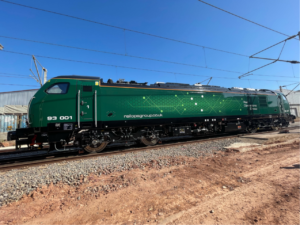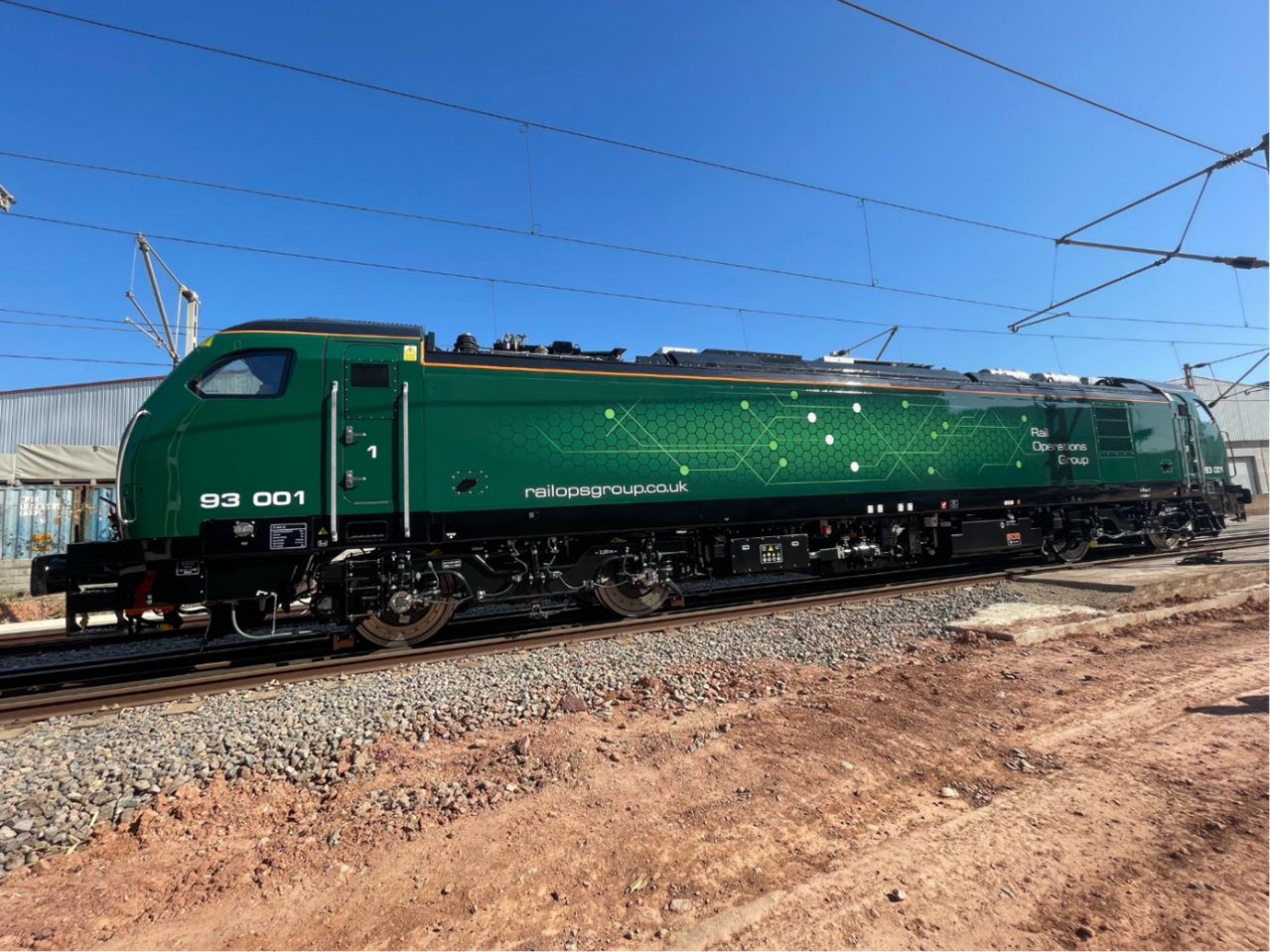Stadler delivers Class 93 Tri-mode Locomotives for Rail Operations Group

The first of 10 Class 93 tri-mode locomotives have been delivered to Rail Operations Group UK, following testing at Stadler’s facility in Valencia in Spain. The advanced locomotives, which have various coupling options making them attractive to different operators, are expected to significantly reduce carbon dioxide emissions for rail freight and potentially for passenger transport services as well.
The locomotive, part of the Stadler EuroDual platform, is an RA7 110mph Bo-Bo tri-mode locomotive that features electric, diesel and battery traction. The Class 93 is equipped with four AC induction traction motors, capable of supplying a nominal electric power of 4MW via overhead wires (5400hp), increasing to 4.6MW via ‘Boost’ mode (6168hp). It offers 900kW (1200hp) on its diesel engine and 400kW (536hp) via its two 200kW battery traction packs. There is a diesel and battery hybrid mode which offers a combined 1300kW (1700hp).

Each of the locomotives is fitted with a Stage V, 900 kW, C32 Caterpillar engine. The C32 is a 12-cylinder turbocharged, four-stroke engine with a mechanical electric unit injection (MEUI) rated at 900kW at 1800rpm, and a fuel tank that holds 3600 litres.
When the Class 93 is using traction power from Overhead Line Equipment (OLE), regenerative braking enables power to be transferred back to the OLE during braking. When the locomotive is running either in diesel or hybrid mode, power from the regenerative braking will either be used to satisfy demands of auxiliary loads and electric train supply (ETS), or to charge the battery packs.
October 2023
Back



